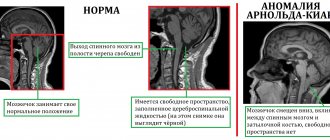Benign or malignant neoplasms can be localized in various parts of the brain. The priority method of treating the pathology is to remove the brain tumor by performing brain surgery. Since the tumor is limited to neighboring tissues, its development leads to compression of the brain centers and functional disorders in the corresponding structures. In 2% of cases, the neoplasm causes death.
What is a craniotomy?
Sometimes accessing a brain tumor is more difficult than removing it. Therefore, some additional steps must be added to help the surgeon access the cancer in the brain. One such method is craniotomy surgery, which involves the removal of bone in addition to the levels of other brain surgeries.
In a craniotomy, a neurosurgeon removes part of the skull bone to gain access to the tumor. Skull resection may require computer assistance and imaging to find and reach the exact location of the cancer. Naturally, magnetic resonance imaging (MRI) or computed tomography (CT) are the methods that come first.
The removed portion of the skull bone is called a “bone flap,” which is placed in place after craniotomy excision of the tumor. Typically, the bone flap is replaced at the end of the procedure with tiny plates and screws. There are cases where the bone flap does not come back, but this is another brain surgery called a "craniectomy", which will be discussed further in the FIT article.
The name of the craniotomy operation comes from the cranium (skull) to be removed. The size and complexity of the craniotomy depends on the patient's problem, which can range from brain swelling to removing foreign objects such as bullets.
Reasons for performing a craniotomy
Why does a person need to have a craniotomy and cranial resection? As briefly mentioned above, reasons for craniotomy surgery vary and include, but are not limited to:
- Access to the treatment site for diagnosis or removal of tumors
- Reducing intracranial pressure by eliminating damaged or swollen areas of the brain may be caused by traumatic injuries or strokes
- Implantation of a device for purposes such as treating movement disorders such as Parkinson's disease or dystonia (a type of movement disorder), or refractive epilepsy
- Aneurysm clipping or repair
- Removing blood or blood clots from leaky blood vessels
- Draining a brain abscess (an abscess is an infected pocket of pus in the tissue)
- Repair of skull fractures
- Repairing a tear in the membrane lining the brain (dura mater)
- Removing a foreign object, such as a bullet.
Craniotomy and resection are not only used for tumors, as explained above. Whenever the brain is under too much pressure, such as when it is swollen, has blood clots, or has an abscess, craniotomy surgery is the choice. If a craniotomy to remove a tumor, blood clots, a bullet in the head, or for any other reason is a treatment, how should the patient prepare?
Is brain transplant possible?
Various brain injuries lead to serious human illnesses, because... its natural regeneration is very complex. Current regenerative medicine attempts to replace or heal damaged or dead brain tissue cells with stem cells that can replace some of the missing parts of the tissue, producing substances important for the repair of the entire body. Attempts at brain transplantation (transplantation) have so far failed. Obstacles include the labor-intensive nature of the procedure and the inability to naturally restore brain nerve fibers, which stands in the way of restoring neural connections when implanting foreign tissue.
One of the main problems is the lack of donors or organs of sufficient quality for transplantation, and the limited survival of organs after transplantation. And brain transplantation remains a favorite topic and inspiration for science fiction today.
Preparation for craniotomy
Before craniectomy surgery, the patient should stop taking any non-steroidal anti-inflammatory drugs and blood thinners for at least a week beforehand. However, if there are medications explicitly prescribed for surgery, they must be carefully taken as scheduled. In addition, the patient should not eat or drink the night before surgery.
Smoking and drinking alcohol are also prohibited from one week to two weeks after surgery. If an MRI or CT scan is required, fiducials may be placed on the patient's forehead and behind the ears to help align the preoperative MRI with the image guidance system. In many cases, the doctor must perform blood tests to make sure the patient is healthy.
Skull resection is performed under general anesthesia, regardless of the type of operation. Signing the consent form is mandatory and the patient must read the pathway carefully and know what they are experiencing. They should also know the risks associated with such brain surgeries.
Physical therapy and occupational therapy
An occupational therapist will evaluate your vision, thinking skills, hand movements, and daily activities. It will determine your ability to drive again or your ability to return to work. A physical therapy instructor will help develop muscle activity and coordination.
Speech therapy
A speech-language pathologist will determine whether the surgery has affected your speech pronunciation and understanding. A speech therapist will evaluate what you can express in words and, if necessary, help you relearn how to associate words with objects and concepts. Specialists may also evaluate you for swallowing problems.
Risks of craniotomy
After tumor removal or craniotomy for other reasons, the patient may experience swelling and bruising of the face or around the eyes, headache, dizziness, and problems with memory, speech, or vision. Thus, the neurosurgeon determines how many days the patient should spend in the intensive care unit (ICU), where heart rate, blood pressure, and nerve signs are constantly monitored. Despite all these precautions, the patient may still be exposed to postoperative risks.
Common post-operative risks are also present here: bleeding, infection, blood clots and reactions to anesthesia. In the case of craniotomy surgery, some other dangers are also added, depending on the type of procedure:
- Strikes
- Convulsions
- Brain swelling
- Nerve damage
- CSF or cerebrospinal fluid leak, which is the fluid that surrounds and protects the brain
- Loss of some mental functions
- Pneumonia, which is a type of lung infection
- Unstable blood pressure
- Muscle weakness
Additionally, some risks are technique-specific and do not occur in all craniotomy patients. These depend on the severity and complexity of the problem and include:
- Memory problem
- Difficulty with speech
- Paralysis
- Impaired balance or coordination
- Coma
Post-operative care can prevent or reduce some risks, but usually the patient must make a compromise and undergo surgery knowing that this may happen. In many cases, it is a matter of life or death, and the patient has no other choice.
Healing factors
Low-level laser therapy has been successfully used in the treatment of headaches for more than 30 years.
The therapy is painless, does not cause complications or side effects, and does not require recovery or preliminary preparation. The laser emits red and infrared light. The rays penetrate the superficial and deep subcutaneous layers. Tissues and cells absorb their energy - under the influence of heat, it is converted into biochemical energy.
As a result, the inflammatory process and pain go away. Laser energy accumulates in the laser affected areas gradually, so most patients feel the effect of treatment after 3-6 procedures.
Under the influence of a laser beam:
- relieves tension in the neck muscles;
— the autonomic nervous system is restored;
- sleep is normalized;
- anxiety goes away;
- Chronic fatigue syndrome disappears.
A low-intensity laser beam acts on the brain through the cranial walls, as a result of which the regeneration of nerve cells is accelerated and the process of neuron death is inhibited.
Different types of craniotomy
Like any other type of brain surgery, craniotomy also has different types, ranging from right frontal craniotomy for tumor resection to translabyrinthine craniotomy. The model is selected based on the patient's condition, the purpose of the operation and overall benefits. Some of the main types of craniotomy are as follows:
Extended Bifrontal Craniotomy When minimally invasive approaches do not meet surgical needs, the surgeon may choose an extended bifrontal craniotomy. Here an incision is made on the scalp behind the hairline and the bone that forms the outline of the orbits, and the forehead is removed.
The most common goal is to reach complex tumors in the front of the brain. This is a traditional approach to the base of the skull with the core belief that removing excess bone is safer than unnecessary manipulation of the mind. Typically, meningiomas, esthesioneuroblastomas, and malignant tumors of the skull base are treated with extended bifrontal craniotomy. Eventually the bone flap is replaced.
Minimally Invasive Supraorbital» Brow» Craniotomy
A supraorbital craniotomy, commonly known as a brow craniotomy, is another procedure for removing brain tumors. As the name suggests, this is a minimally invasive approach and involves making a small incision in the eyebrow to access tumors at the front of the brain. Rathke's cleft cysts, skull base tumors, and some pituitary tumors can also be treated with this method.
Because it is a minimally invasive procedure, it may be less painful than an open craniotomy. The recovery period may be shorter and there will not be a large scar at the surgical site.
Retrosigmoid" Keyhole" Craniotomy
A retrosigmoid craniotomy, often known as a “keyhole” craniotomy, is another minimally invasive surgical procedure for removing brain tumors. After a small incision behind the ear provides access to the cerebellum and brain stem, the surgeon can remove the tumor from the base of the skull. Meningiomas, acoustic neuromas, and metastatic tumors of the brain or spine are other targets for keyhole craniotomy.
Like other minimally invasive approaches, retrosigmoid craniotomy also requires less recovery time, while it leaves a minimal surgical scar and less pain compared to various types of brain surgeries.
Orbitozygomatic Craniotomy
Orbitozygomatic craniotomy is the second traditional approach to the skull base presented in our article. Like extended bifrontal craniotomy, orbitozygomatic craniotomy is also used to access and operate on complex tumors and aneurysms. This approach is based on the same belief as extended bifrontal craniotomy: removing excess bone is safer than unnecessary manipulation of the brain.
When minimally invasive approaches fail, the bone that forms the outline of the orbit and cheek is removed for replacement at the end for the purpose of craniotomy excision of the tumor. Some cases that can be treated with this type of surgery include craniopharyngiomas, pituitary tumors, and meningiomas. The neurosurgeon can reach deeper and access hard-to-reach areas of the brain, minimizing serious brain damage .
translabyrinthine craniotomy
In a translabyrinthine craniotomy, an incision is made in the scalp behind the ear to remove the mastoid bone and part of the inner ear bone. The significant portion of the inner ear bone that is removed here are the semicircular canals containing receptors for balance. Sometimes the entire tumor cannot be removed due to the severe damage that the removal procedure can create. However, neurosurgeons usually try to remove all or as much of the tumor as possible.
The biggest problem with this method is hearing loss. When the semicircular canals are removed, hearing is sacrificed for access and tumor removal. However, the risk of facial nerve damage may be reduced.
In all of these methods, the removed bone flap is replaced and held in place with screws and plates. This does not always happen with a bone graft, and sometimes the surgeon does not replace the bone.
Radiation therapy for brain cancer
One of the most effective methods of treating cancer pathologies is radiation therapy. Radiation therapy for brain tumors helps to reduce the size of the tumor if it is not possible to completely remove it.
This method is based on irradiation of the affected area of the brain. However, it is necessary to understand that radiation has a detrimental effect on all cells of the body, including healthy ones. But pathological cells are more sensitive, so this effect is more pronounced for them.
Radiation therapy is used to treat both benign and malignant tumors. It is often combined with surgical treatment and chemotherapy.
Radiation therapy for brain tumors can be carried out in several ways:
- traditional - involves remote irradiation, in which the head of the device is placed at a certain distance from the patient’s head;
- brachytherapy - radioactive material is implanted directly into the tumor, so the tumor is irradiated from the inside;
- targeted irradiation method - a narrow, thin beam of radiation is used. To carry out this method, a gamma and cyber knife is used.
Craniotomy, Craniectomy and Cranioplasty
Craniotomy, craniectomy and cranioplasty sound similar, but are three different methods of brain surgery. As the names suggest, the cranium (skull) is involved in all three methods. As mentioned earlier, in a craniotomy, part of the head is temporarily removed to allow access to deeper parts of the brain to remove tumors, blood clots, brain tumors, foreign bodies and treat some other problems as mentioned in previous sections of the article. The bone flap is placed in place at the end of the operation and secured with titanium plates and screws.
On the other hand, with a craniectomy, the bone flap is not replaced immediately. Typically, neurosurgeons prefer this method when the problem is traumatic brain injury and other head injuries that involve swelling. The removed portion of the skull is kept away to relieve pressure and compression on certain areas of the brain.
In the third technique, cranioplasty, a bone flap is removed, just like the previous two methods. However, it never reattaches because the removed part of the skull itself has problems: it is damaged or cancerous. Thus, the removed part is replaced with titanium, acrylic or a synthetic bone substitute. Installation of the new part must also be performed by a neurosurgeon.
Relieving pressure in an emergency is one of the main advantages and specific characteristics of cranioplasty. It can save lives with this particular benefit. Another specific benefit of cranioplasty is that the new piece of bone can help restore the natural contour of the skull. Sometimes the removed part distorts the skull, but cranioplasty can help restore the natural shape. Titanium implants are especially preferred for cranioplasty due to their many benefits.
Symptoms for various degrees of TBI severity
The severity of TBI is determined by the Glasgow Coma Scale (assessing the patient’s eye opening, movement and speech): mild – 13–15 points, moderate – 9–12 points, severe – 3–9 points. In other words, three factors are taken into account: state of consciousness, vital functions, neurological symptoms. In this case, the patient’s condition is assessed as satisfactory, moderate, severe, extremely severe, terminal (between life and death). The more serious the injury and the deeper its penetration, the more difficult the patient’s recovery.
Symptoms of TBI with:
- Mild severity: headache (cephalalgia), dizziness, nausea and vomiting, sleep disturbance, irritability, fatigue.
- Moderate: speech impairment, partial loss of vision, paroxysms of the limbs, mental disorders, memory loss, heart rhythm disturbances, high-intensity cephalgia, increased frequency of respiratory movements while maintaining rhythm, loss of consciousness for up to several hours.
- Severe: convulsions, paralysis, hypo- or hypertonicity of muscles, lack of consciousness for up to several weeks, coma, critical impairment of vital functions, deep brainstem and cerebral disorders.
Use of titanium implants in Cranioplasty
As mentioned in the previous section, with cranioplasty, the removed part of the skull cannot be put back. It is either damaged, malignant, or has other problems and should not be replaced. Therefore, it is necessary to use an implant made of titanium, PEEK, acrylic or a synthetic bone substitute.
Titanium is one of the most common materials used for surgical purposes and implants. It is also becoming increasingly popular in cranioplasty as it prevents cosmetic deformity, reduces the vulnerability of exposed brain tissue, and minimizes the risks and costs associated with additional surgeries and procedures. .
Brain surgery can be a minimally invasive approach such as a brow craniotomy, a right frontal craniotomy for tumor resection, or cranioplasty, where part of the skull is discarded and a piece of titanium or other materials replaces it. However, the patient should know enough about the operation, its preparation and its risks to minimize post-operative dangers as much as possible. .







